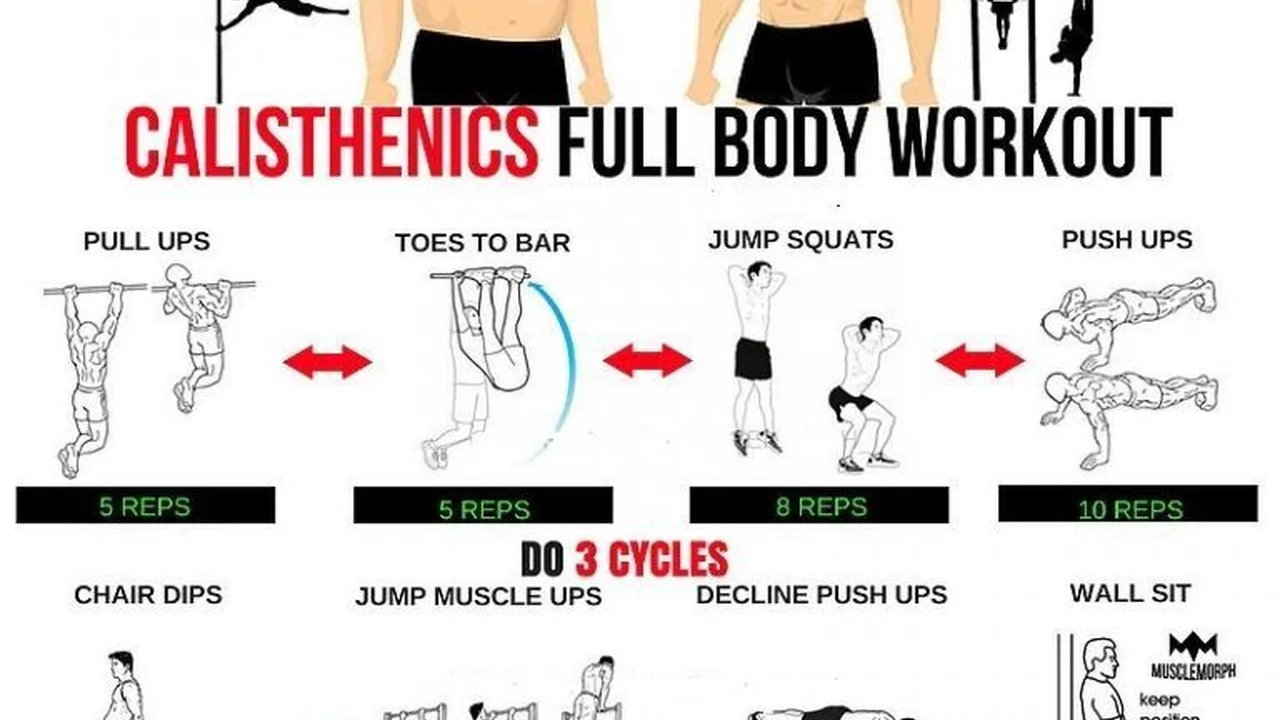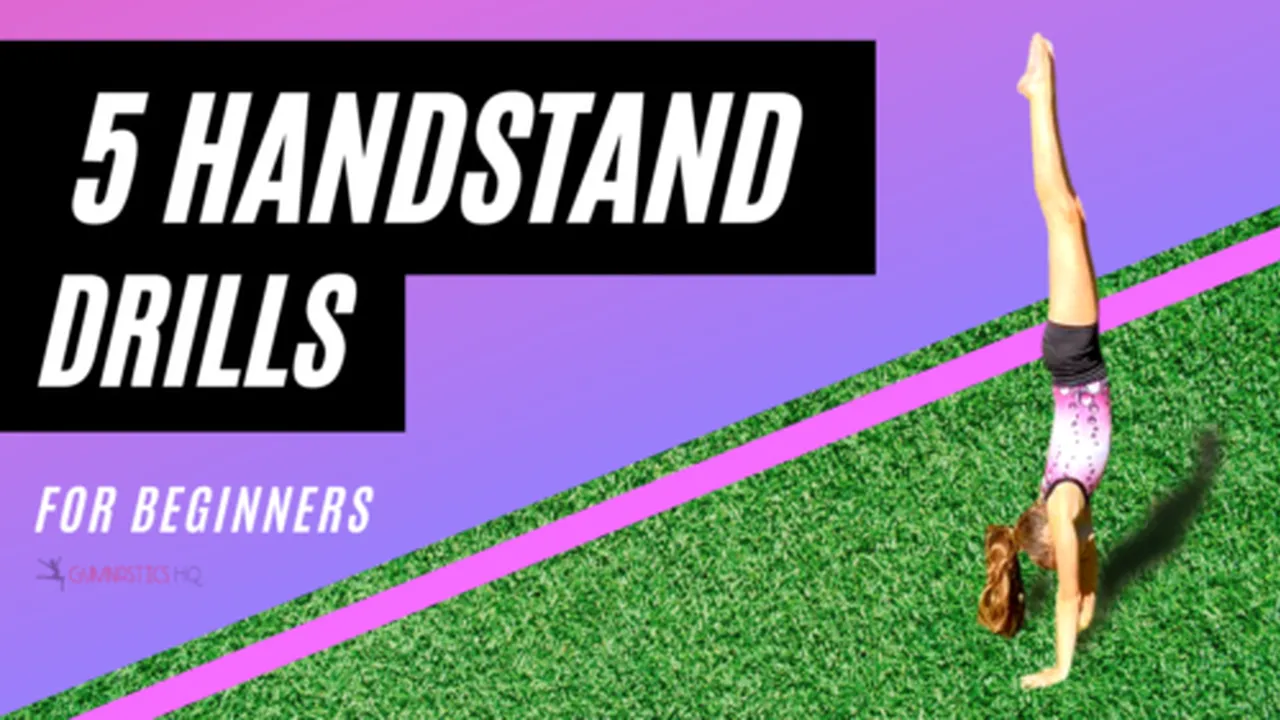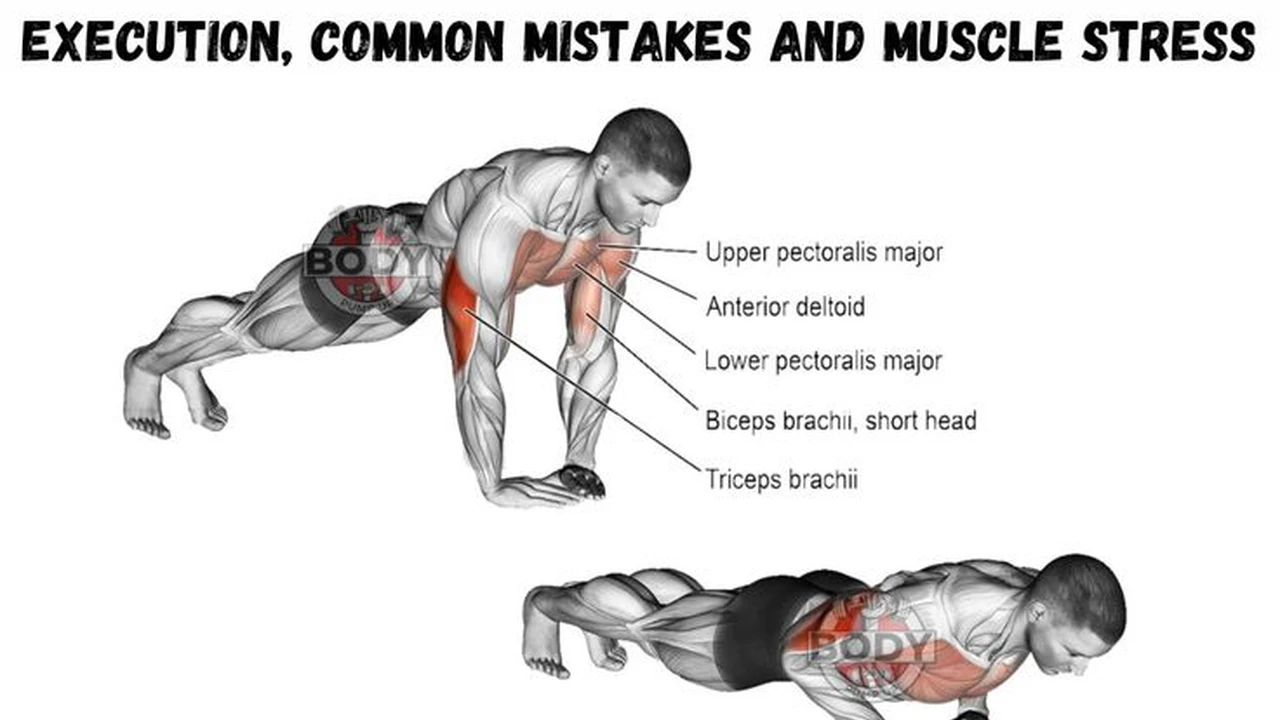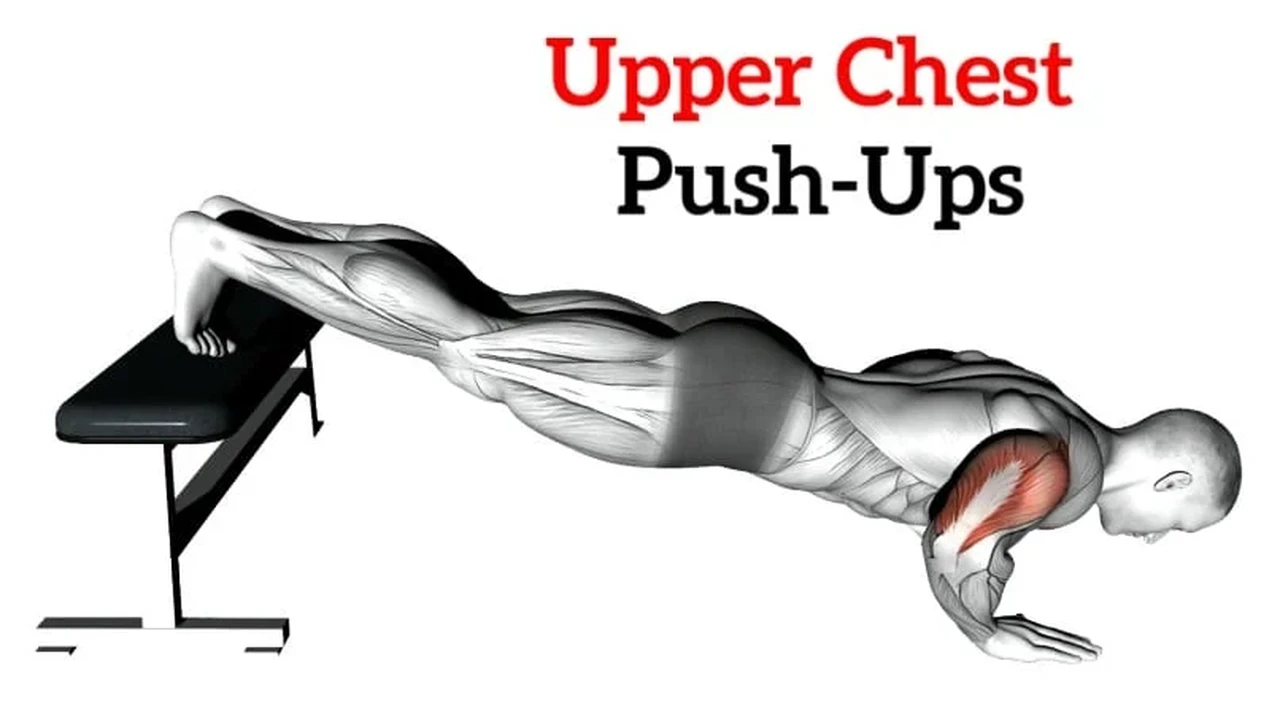Calisthenics for Fat Loss: A Complete Guide
Calisthenics offers a fantastic and accessible path to fat loss, using your own bodyweight for resistance. This guide dives deep into how to structure your calisthenics workouts for optimal fat burning, combining the right exercises, nutrition, and lifestyle adjustments. We'll explore effective routines, product recommendations, and tips to maximize your results without needing a gym membership.

The Science Behind Calisthenics and Fat Loss
So, you're looking to shed some pounds and tone up using calisthenics? Awesome choice! The key is understanding how this bodyweight training method works to torch fat. Calisthenics, when performed with the right intensity and volume, can significantly increase your metabolism, build lean muscle mass, and improve your overall fitness. Think of it as a fat-burning furnace fueled by your own bodyweight.
It's not just about doing push-ups and squats. It's about creating a metabolic demand that forces your body to tap into its fat reserves for energy. This involves incorporating compound movements (exercises that work multiple muscle groups simultaneously) and using progressive overload (gradually increasing the difficulty of your workouts). When you consistently challenge your body, it adapts by building muscle and burning more calories, even when you're resting. And let's be honest, who doesn't want to burn calories while chilling on the couch?
Effective Calisthenics Exercises for Fat Burning Workouts
Let's get down to the nitty-gritty: which exercises are going to give you the most bang for your buck when it comes to fat loss? We're talking about exercises that engage multiple muscle groups, elevate your heart rate, and create a serious calorie burn.
- Burpees: The king of calorie-torching exercises. Burpees combine squats, push-ups, and jumps into one explosive movement. They're brutal, but incredibly effective.
- Squats: A foundational exercise that works your legs, glutes, and core. Variations like jump squats and pistol squats can increase the intensity.
- Push-ups: Classic and versatile. Push-ups target your chest, shoulders, and triceps. Experiment with different hand placements to target different muscle groups.
- Pull-ups/Chin-ups: A challenging but rewarding exercise that works your back, biceps, and forearms. If you can't do a full pull-up, use an assisted pull-up machine or resistance bands.
- Plank: A static exercise that strengthens your core. Hold a plank for as long as possible, maintaining a straight line from head to heels.
- Lunges: Another great exercise for your legs and glutes. Forward, reverse, and lateral lunges all offer unique benefits.
The key is to perform these exercises with proper form and maintain a high intensity. Don't just go through the motions; focus on engaging your muscles and pushing yourself. Remember, quality over quantity!
Creating Your Calisthenics Fat Loss Program at Home
Now that you know which exercises to focus on, let's talk about structuring your workouts. A well-designed calisthenics program should incorporate a variety of exercises, varying rep ranges, and progressive overload. Here's a sample program you can adapt to your fitness level:
Sample Workout Routine
Perform each exercise for the prescribed number of reps or time, resting for 30-60 seconds between sets.
- Warm-up: 5 minutes of light cardio and dynamic stretching.
- Workout:
- Burpees: 3 sets of 10-12 reps
- Squats: 3 sets of 15-20 reps
- Push-ups: 3 sets of as many reps as possible (AMRAP)
- Pull-ups/Chin-ups: 3 sets of AMRAP (or assisted pull-ups)
- Plank: 3 sets, holding for 30-60 seconds
- Lunges: 3 sets of 12-15 reps per leg
- Cool-down: 5 minutes of static stretching.
This is just a sample routine, feel free to adjust it to fit your needs and preferences. The most important thing is to be consistent and challenge yourself.
Progressive Overload Strategies for Continued Fat Loss
Your body is incredibly adaptable. If you keep doing the same workouts over and over again, it will eventually stop responding. That's where progressive overload comes in. Progressive overload means gradually increasing the difficulty of your workouts over time. This can be done in several ways:
- Increasing reps: Gradually increase the number of reps you perform for each exercise.
- Increasing sets: Add an extra set or two to your workouts.
- Increasing difficulty: Progress to more challenging variations of exercises (e.g., from push-ups on your knees to full push-ups).
- Decreasing rest time: Reduce the amount of rest you take between sets.
- Adding weight: Use a weighted vest or backpack to increase the resistance.
Experiment with different strategies to find what works best for you. The key is to constantly challenge your body and keep it guessing.
Nutrition and Calisthenics Optimizing Your Diet for Fat Loss Results
You can't out-train a bad diet. While calisthenics is a powerful tool for fat loss, it's only one piece of the puzzle. Nutrition plays a crucial role in achieving your goals. Here are some key dietary principles to follow:
- Eat a balanced diet: Focus on whole, unprocessed foods like fruits, vegetables, lean protein, and healthy fats.
- Control your calorie intake: To lose weight, you need to burn more calories than you consume. Use a calorie tracking app to monitor your intake.
- Prioritize protein: Protein is essential for building and repairing muscle tissue. Aim for at least 1 gram of protein per pound of bodyweight per day.
- Stay hydrated: Drink plenty of water throughout the day.
- Limit processed foods, sugary drinks, and unhealthy fats: These foods are high in calories and low in nutrients.
It's also important to be mindful of your macronutrient ratios (the percentages of protein, carbohydrates, and fats in your diet). Experiment with different ratios to find what works best for you. A common starting point is 40% protein, 30% carbohydrates, and 30% fats.
Essential Equipment for Home Calisthenics Training
While calisthenics is primarily a bodyweight exercise, some equipment can enhance your workouts and help you progress faster. Here are a few essential items to consider:
- Pull-up bar: A must-have for performing pull-ups and chin-ups. Look for a sturdy bar that can be easily installed in a doorway or mounted on a wall.
- Resistance bands: Versatile and affordable, resistance bands can be used to assist with exercises like pull-ups or to add resistance to exercises like squats and push-ups.
- Gymnastics rings: Gymnastics rings offer a more challenging and versatile workout than a pull-up bar. They can be used for a wide range of exercises, including dips, rows, and muscle-ups.
- Jump rope: A great way to warm up, improve your cardiovascular fitness, and burn calories.
- Yoga mat: Provides a comfortable surface for exercises like planks and push-ups.
Product Recommendations and Comparisons
Let's delve into some specific product recommendations to enhance your home calisthenics setup:
Pull-Up Bars
- Iron Gym Total Upper Body Workout Bar: A classic doorway pull-up bar. Affordable and easy to install. Price: $30-$40.
- Garren Fitness Maximiza Pull Up Bar: A wall-mounted pull-up bar. More stable and can support heavier weight. Price: $60-$80.
- Comparison: The Iron Gym is great for beginners and those on a budget. The Garren Fitness bar is better for more advanced users and those who need a more stable option.
Resistance Bands
- Serious Steel Fitness Resistance Bands: High-quality resistance bands with varying levels of resistance. Durable and long-lasting. Price: $20-$50 per band, depending on resistance.
- Fit Simplify Resistance Loop Exercise Bands: A set of resistance bands with different resistance levels. Affordable and portable. Price: $15-$25 per set.
- Comparison: Serious Steel bands are more durable and offer a wider range of resistance levels. Fit Simplify bands are more affordable and convenient for travel.
Gymnastics Rings
- Stalwart Fitness Wood Gymnastic Rings: High-quality wooden rings with adjustable straps. Comfortable and durable. Price: $60-$80.
- Nayoya Gymnastic Rings with Straps: More affordable plastic rings with adjustable straps. A good option for beginners. Price: $30-$40.
- Comparison: Wooden rings offer a better grip and feel more comfortable. Plastic rings are more affordable but may not be as durable.
Using these products: Use the pull-up bar for pull-ups, chin-ups, and hanging leg raises. Use resistance bands to assist with pull-ups, add resistance to squats and push-ups, or for mobility exercises. Use gymnastics rings for dips, rows, and other advanced exercises. These products can significantly enhance your calisthenics workouts and help you progress faster.
Staying Motivated and Consistent with Your Calisthenics Journey
Consistency is key to success in any fitness program. Here are some tips to help you stay motivated and consistent with your calisthenics journey:
- Set realistic goals: Don't try to do too much too soon. Start with small, achievable goals and gradually increase the difficulty of your workouts.
- Find a workout buddy: Working out with a friend can help you stay motivated and accountable.
- Track your progress: Monitor your workouts and track your progress. This will help you see how far you've come and stay motivated to continue.
- Make it fun: Find exercises that you enjoy and incorporate them into your workouts.
- Listen to your body: Don't push yourself too hard, especially when you're just starting out. Rest and recover when you need to.
- Be patient: Results take time. Don't get discouraged if you don't see results immediately. Just keep showing up and putting in the work.
Remember, fitness is a journey, not a destination. Enjoy the process and celebrate your successes along the way. Good luck on your calisthenics fat loss journey!
:max_bytes(150000):strip_icc()/277019-baked-pork-chops-with-cream-of-mushroom-soup-DDMFS-beauty-4x3-BG-7505-5762b731cf30447d9cbbbbbf387beafa.jpg)





